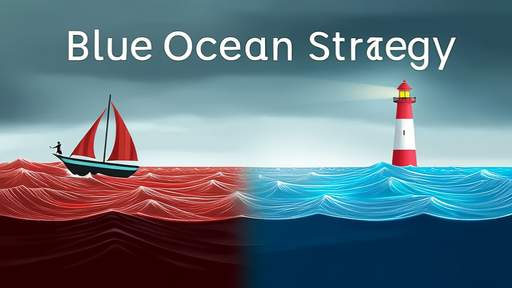The business landscape has become increasingly volatile, with traditional forecasting methods often falling short in preparing organizations for unexpected disruptions. This is where scenario planning meets Monte Carlo simulation, creating a powerful framework for strategic decision-making under uncertainty. Unlike deterministic models that rely on fixed inputs, this combined approach embraces complexity by generating thousands of possible futures, each with its own probability distribution.
At its core, scenario planning isn't about predicting the future but rather about building organizational resilience. When augmented with Monte Carlo techniques, it transforms from a qualitative exercise into a quantitative powerhouse. Financial institutions were among the first to recognize this synergy, using it to stress-test portfolios against everything from mild recessions to full-blown economic collapses. The same methodology is now revolutionizing supply chain management, healthcare planning, and even climate change adaptation strategies.
What makes this combination so potent is its ability to handle interdependent variables. Consider a manufacturer evaluating expansion plans: raw material costs, labor availability, and consumer demand might all fluctuate simultaneously in ways that simple sensitivity analysis can't capture. Monte Carlo simulation allows these factors to vary according to their historical distributions while scenario planning ensures the outcomes align with strategic narratives - perhaps a "green transition" scenario where sustainability regulations tighten unexpectedly.
The computational intensity that once made these simulations prohibitive has become their greatest advantage in the age of cloud computing. Where analysts previously had to limit their models to a handful of key variables, modern implementations can incorporate hundreds of fluctuating parameters without sacrificing performance. This granularity reveals hidden vulnerabilities - like how a minor supplier's financial instability might cascade through operations when combined with currency fluctuations.
Critically, the value lies not in the specific outputs but in the decision-making framework they create. One energy company discovered through these simulations that their "diversified" portfolio was actually dangerously correlated in certain geopolitical scenarios. The insight didn't prescribe actions but fundamentally changed how executives evaluated new investments. Such paradigm shifts are becoming common as more organizations move beyond static SWOT analyses.
Implementation challenges persist, particularly around data quality and executive buy-in. The most sophisticated simulation is worthless if fed with poor historical data or ignored by leadership. Successful adopters often begin with limited pilots - perhaps modeling just one business unit's exposure to currency risks - before scaling the approach. The visual nature of Monte Carlo outputs (probability distributions rather than spreadsheets) frequently helps bridge the gap between analysts and decision-makers.
As artificial intelligence begins augmenting these simulations, we're seeing second-order effects emerge. Machine learning algorithms can now suggest plausible scenarios that human planners might overlook, like the compounding effects of a cyberattack during a supply shortage. This doesn't replace human judgment but expands the boundaries of what's considered in strategic planning. Early adopters report identifying risks and opportunities that would have remained invisible in traditional frameworks.
The methodology's true test came during the pandemic, when organizations using scenario-based Monte Carlo simulations generally adapted faster to disruptions. Those who had modeled "low-probability" pandemic scenarios - even crudely - had playbooks ready when others were scrambling. This has sparked renewed interest across industries, with even risk-averse sectors like utilities and pharmaceuticals now investing heavily in these capabilities.
Looking ahead, the integration of real-time data feeds promises to make these simulations living models rather than periodic exercises. Imagine a logistics company whose risk models automatically update as new weather patterns emerge or port congestion data streams in. This dynamic approach could redefine strategic planning from an episodic activity to a continuous organizational capability - one where every major decision gets stress-tested against thousands of plausible futures before being implemented.
Ultimately, the marriage of scenario planning and Monte Carlo simulation represents more than a technical advancement - it's a fundamental shift in how organizations perceive uncertainty. By quantifying what was previously considered unquantifiable and visualizing what seemed unimaginable, this approach is helping leaders navigate an increasingly complex world with eyes wide open.

By /Jun 3, 2025

By /Jun 3, 2025

By /Jun 3, 2025

By /Jun 3, 2025

By /Jun 3, 2025

By /Jun 3, 2025

By /Jun 3, 2025

By /Jun 3, 2025

By /Jun 3, 2025

By /Jun 3, 2025

By /Jun 3, 2025

By /Jun 3, 2025

By /Jun 3, 2025

By /Jun 3, 2025

By /Jun 3, 2025

By /Jun 3, 2025

By /Jun 3, 2025

By /Jun 3, 2025

By /Jun 3, 2025

By /Jun 3, 2025